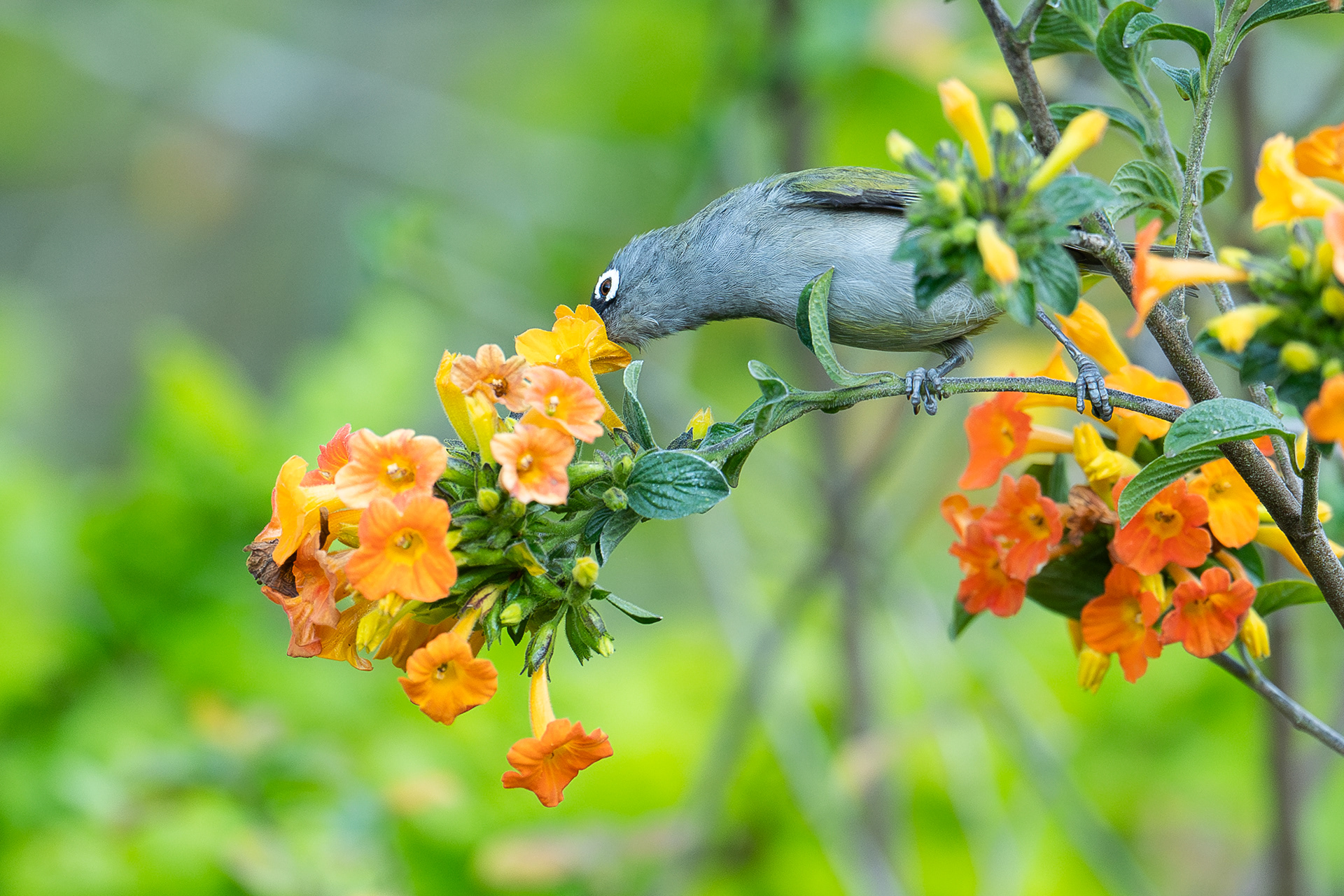Attracting females with flair
One of the more common bird species in the forests of Réunion is the Mascarene Paradise flycatcher, which is represented on the island by an endemic subspecies. During a hike through one of the beautiful cloud forests, I witnessed the mating ritual of these birds. The male, with his characteristic metallic blue-black head, first stretches and shakes his head several times from side to side. He also spreads his tail and emits several melodious whistles. The female, meanwhile, remains quietly perched on a nearby branch. Unlike the males, females have a grayish head. If the male manages to convince her, she will lay two to three eggs, hidden deep in the undergrowth. A magnificent spectacle to witness!
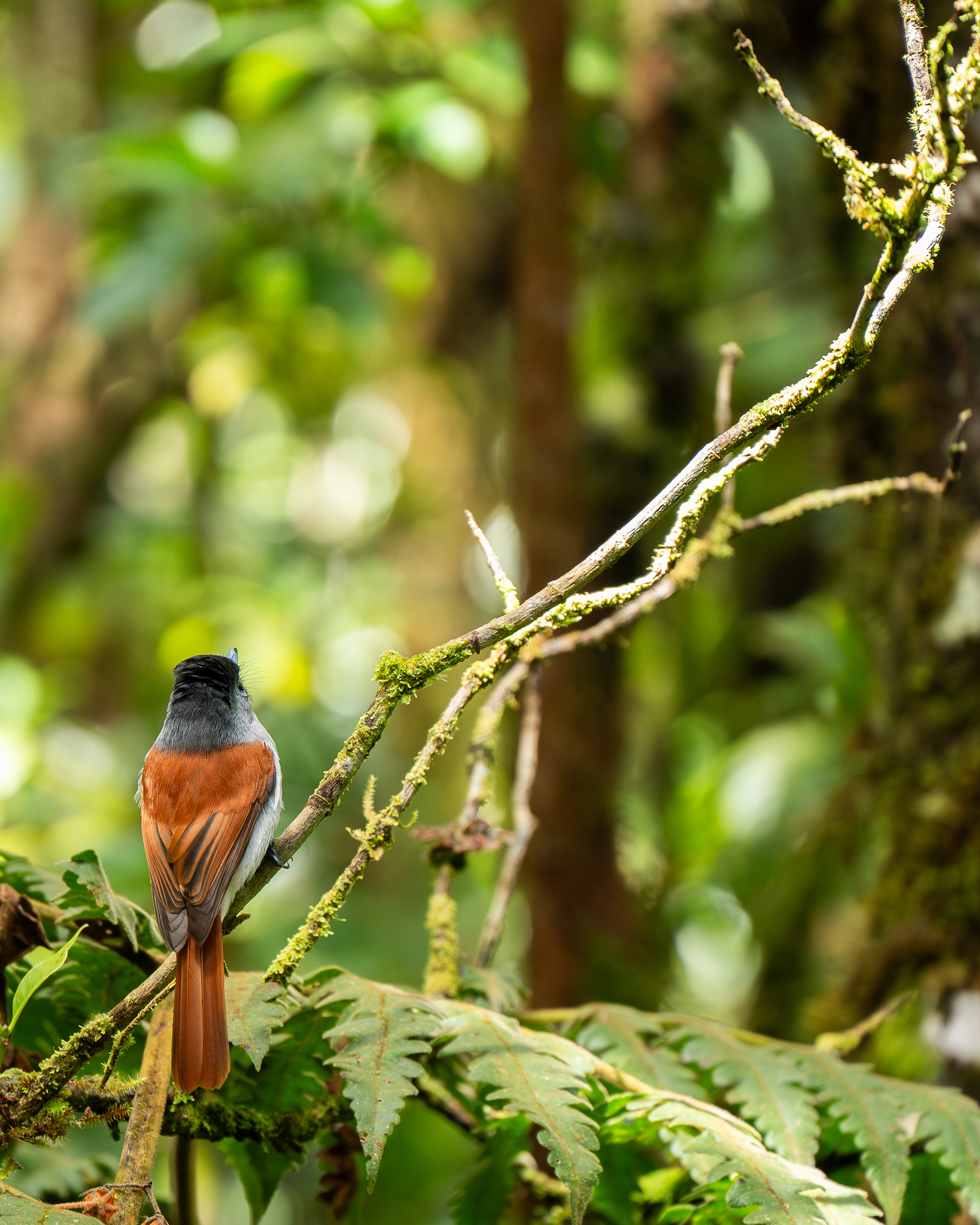

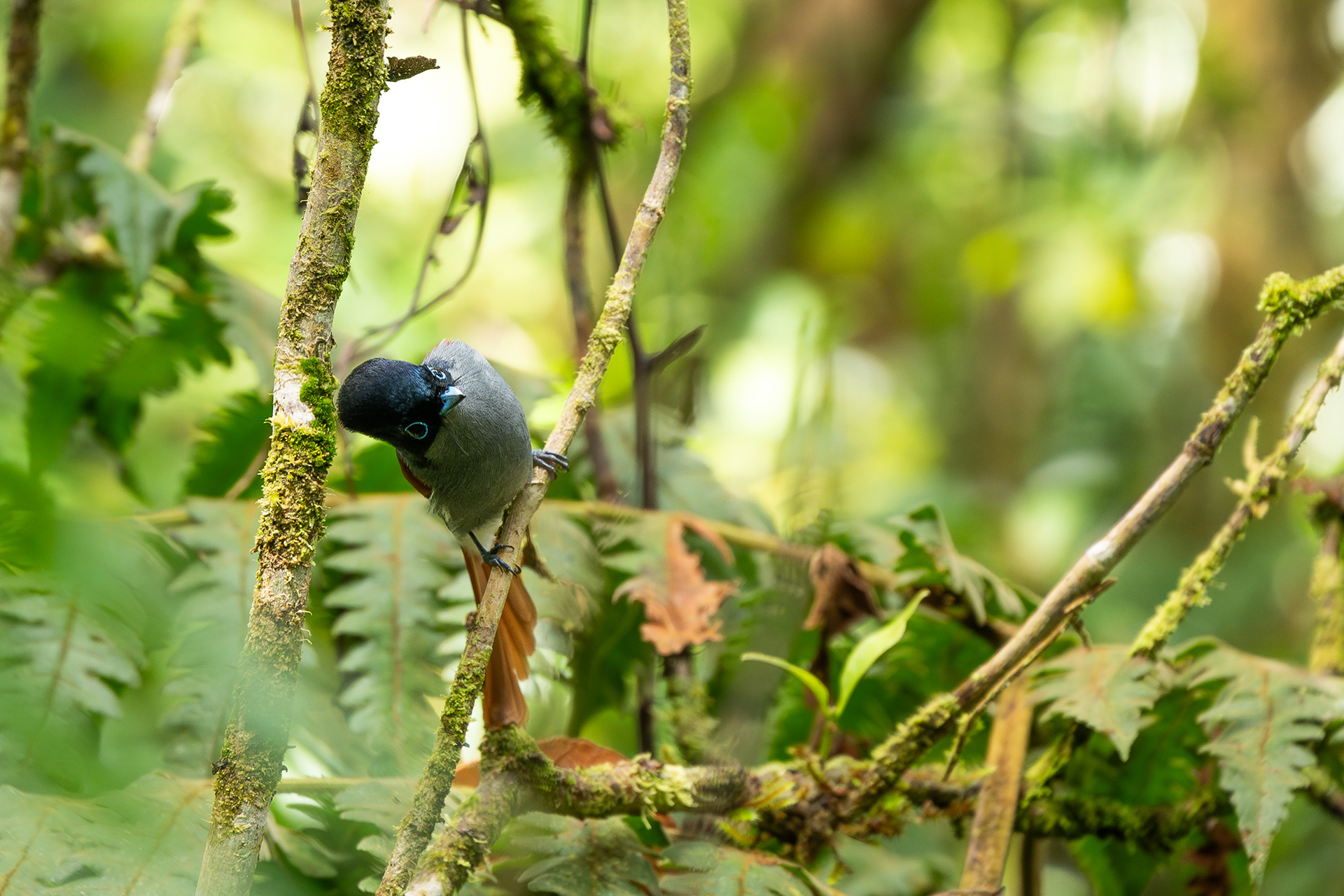
The louder, the better?
Where we have our blackbird, Réunion forests have the Réunion bulbul . This black-colored bird is usually heard before you see it. Its call is shrill and loud, and reminds me of a baby's cry. According to 2017 data, the population numbers between 17,000 and 50,000 adult birds. While that seems quite some at first glance, the species is struggling due to the increasing presence of the red-whiskered bulbul, an invasive bird native to Pakistan and India.
Réunion may be a melting pot of cultures, but it is also a melting pot of animal and plant species— although the latter doesn't always work out well. Many of the "new" species have a competitive advantage: they are more aggressive and often bring new diseases.
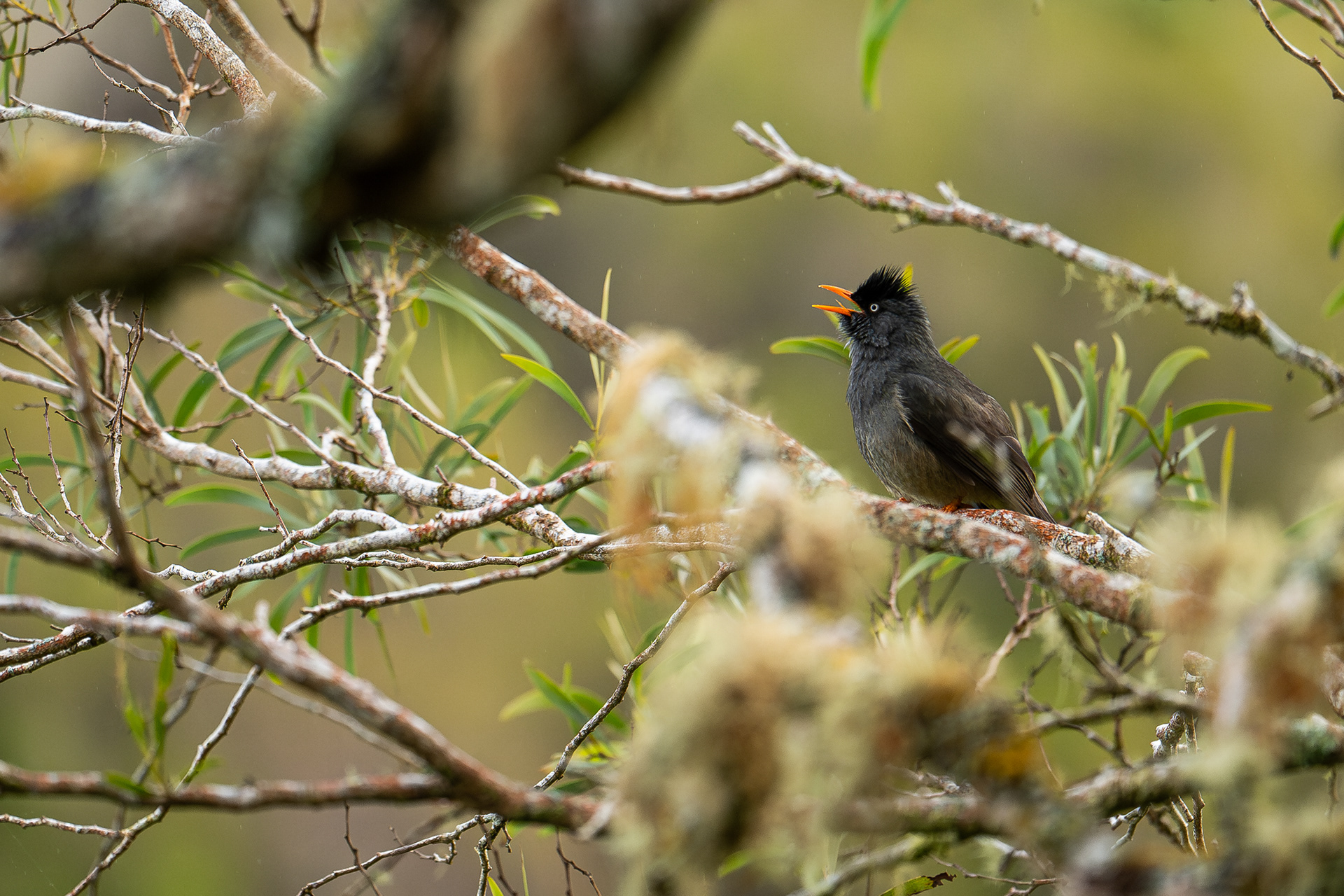
Réunion bulbul
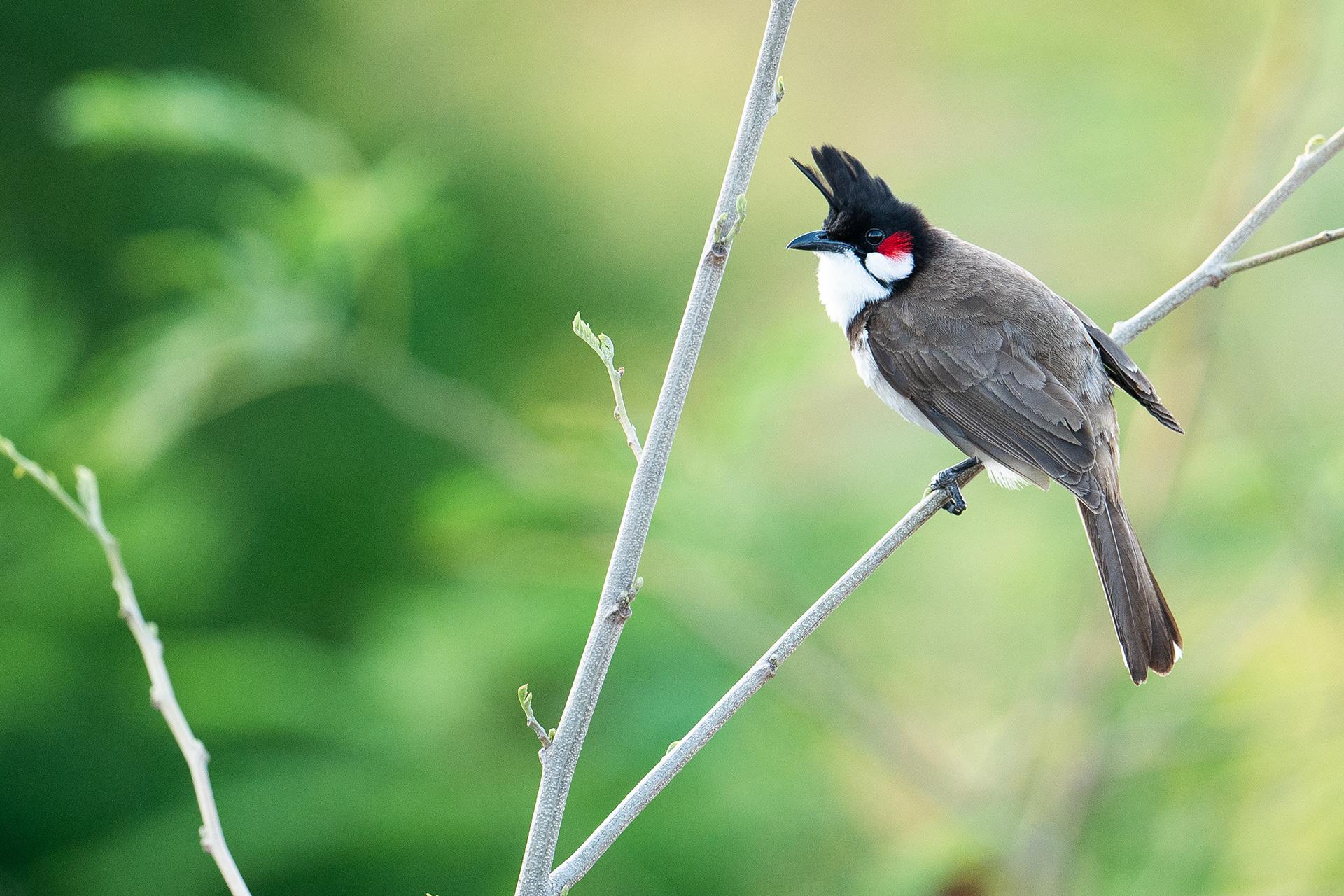
Red whiskered bulbul
Nectar eaters
A common bird on Réunion is the olive-green Réunion white-eye, locally called oiseaux vert because of its color. Its behavior reminded me of "our" long-tailed tits or goldcrests: hyperactive birds that flit from twig to twig and rarely sit still. Unlike these little "Duracell rabbits", however, the white-eye feeds on nectar, making them somewhat like lazy hummingbirds. It was remarkable to witness this behavior up close, as it's nonexistent in Belgium!

